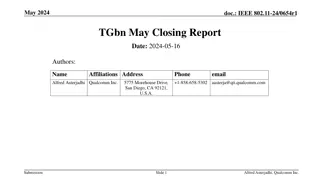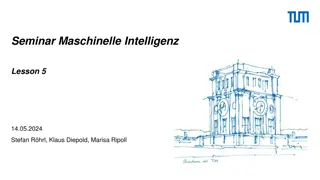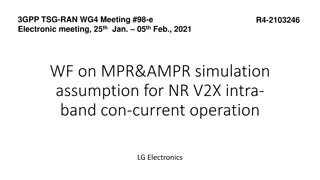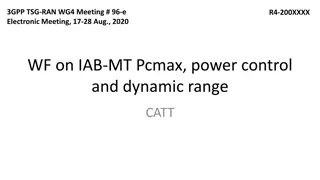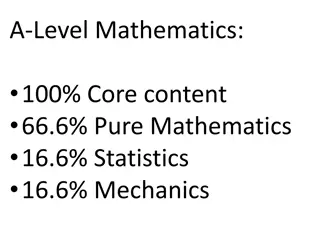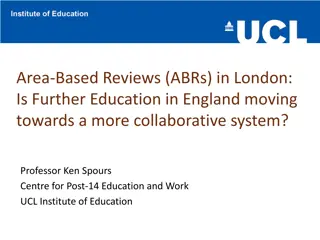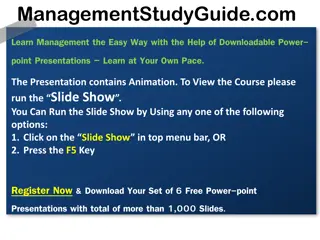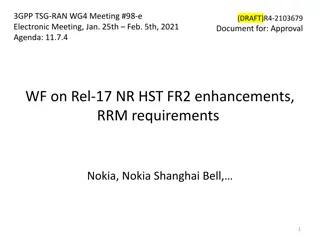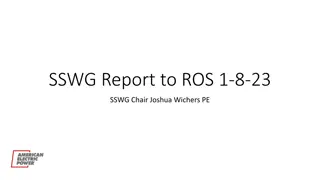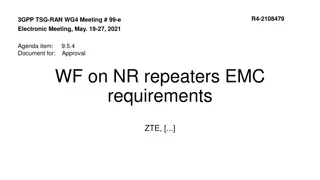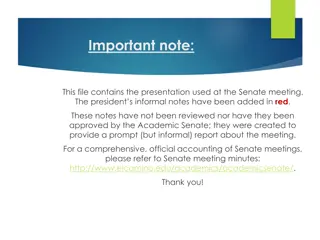Further discussions on NPCA
In this document, authors Shawn Kim and John Son from WILUS Inc. delve into the details of NP User Device Enhancements in the context of IEEE 802.11-24. The document presents additional insights and discussions on this topic, offering valuable information for those interested in advancements in wireless communication technologies.
Download Presentation

Please find below an Image/Link to download the presentation.
The content on the website is provided AS IS for your information and personal use only. It may not be sold, licensed, or shared on other websites without obtaining consent from the author.If you encounter any issues during the download, it is possible that the publisher has removed the file from their server.
You are allowed to download the files provided on this website for personal or commercial use, subject to the condition that they are used lawfully. All files are the property of their respective owners.
The content on the website is provided AS IS for your information and personal use only. It may not be sold, licensed, or shared on other websites without obtaining consent from the author.
E N D
Presentation Transcript
July 2024 doc.: IEEE 802.11-24/1155r0 Further discussions on NPCA Date: 2024-07-12 Authors: Name Shawn (Sanghyun) Kim John (Ju-Hyung) Son Affiliations WILUS Inc. Address 216 Hwangsaeul-ro, Seongnam-si, Gyeonggi-do, Korea Phone +82-31-712-0523 email shawn.kim@wilusgroup.com john.son@wilusgroup.com jinsam.kwak@wilusgroup.co m greg.ko@wilusgroup.com Jin Sam Kwak Greg Geonjung Ko hank.sung@wilusgroup.com Hank (Hyeonjun) Sung Submission Slide 1 Sanghyun Kim (WILUS), et al.
July 2024 doc.: IEEE 802.11-24/1155r0 Abstract TGbn has agreed to define Non-Primary Channel Access [1] Some details on the NPCA are under discussion: Switch timing (frame/PPDU formats) Channel access mechanism (EDCA parameters) Medium Synchronization Different view on P20 IDLE/BUSY between AP and STAs OBSS TXOP threshold to initiate NPCA operation, etc. In this contribution, we discuss further details on NPCA: Different view problems on OBSS TXOP length NPCA primary channel selection NPCA Mode 1 / Mode 2 Submission Slide 2 Sanghyun Kim (WILUS), et al.
July 2024 doc.: IEEE 802.11-24/1155r0 Different view problems on OBSS TXOP length Some contributions discussed different view problems on the primary channel state (idle/busy) There is another different view problem regarding busy duration of the primary channel Each STA may have different view on the length of the OBSS TXOP occupying the primary channel The problem occurs when the NPCA operation of each STA is initiated by different OBSSs OBSS1 OBSS2 1. AP and STA1 transition to nP-channel operation due to OBSS1 2. STA2 transitions to nP-channel operation due to OBSS2 3. STA3 transitions to nP-channel operation due to OBSS3 (The STAs operating on the nP-channel have different views on the length of the nP-channel operation.) P80 NAV set by OBSS1 (AP & STA1) STA2 STA1 AP P80 NAV set by OBSS2 (STA2) STA3 P80 NAV set by OBSS3 (STA3) OBSS3 Submission Slide 3 Sanghyun Kim (WILUS), et al.
July 2024 doc.: IEEE 802.11-24/1155r0 Different view problems on OBSS TXOP length (cont d) The different view between AP/STAs might lead to interoperability issues In nP-channel, TXOP responder may not respond to the received ICF due to its Duration/ID field value being larger than what it can respond Basic approach to this problem is to let all the nP-channel STAs follow the AP s view Option 1 Limiting the TXOP holder role of the NPCA to AP only Option 2 AP (if TXOP responder) indicates its NPCA operation duration (derived from AP s recorded OBSS TXOP length) by using ICR, and the non-AP STA that transmitted ICF ends its TXOP based on the ICR s duration In both options, nP-channel STA switches back to P-channel when the AP switches back to P-channel regardless of STA s recorded OBSS TXOP length Submission Slide 4 Sanghyun Kim (WILUS), et al.
July 2024 doc.: IEEE 802.11-24/1155r0 NPCA Primary Channel Selection We may not need to define specific rules for AP to select the NPCA primary channel Baseline does not specify rules for AP to select the primary channel either Thus an AP may utilize measurements and internal algorithms to select the optimal NPCA primary channel e.g., It may measure channel load of each secondary subchannels to find the most idle subchannel However, NPCA performance can vary greatly depending on the NPCA primary channel location, thus providing guidelines for selecting the NPCA primary channel would be beneficial The first guideline is to select a subchannel that has a low probability of being occupied by OBSS TXOPs occupying the primary channel The subchannels in S160 have lowest probability of being occupied since they can only be occupied by 320 MHz OBSS TXOP Preferred option for 320 MHz NPCA BSS The subchannels in S80 have lower probability of being occupied since they can be occupied by 320/160 MHz OBSS TXOP Preferred option for 160 MHz NPCA BSS The two subchannels in S40 will be occupied by 320/160/80 MHz OBSS TXOP Submission Slide 5 Sanghyun Kim (WILUS), et al.
July 2024 doc.: IEEE 802.11-24/1155r0 NPCA Primary Channel and NPCA Operations There are cases where the AP selects a NPCA primary channel which is outside of the operating bandwidth of some NPCA non-AP STAs In this case, there will be two groups of NPCA STAs: Group 1: A group of NPCA non-AP STAs for which the NPCA primary channel is within their operating bandwidth Group 2: A group of NPCA non-AP STAs for which the NPCA primary channel is outside of their operating bandwidth S80 160 MHz STA (Group 1) NPCA P20 80 MHz STA (Group 2) P80 P20 Submission Slide 6 Sanghyun Kim (WILUS), et al.
July 2024 doc.: IEEE 802.11-24/1155r0 NPCA Primary Channel and NPCA Operations (cont d) NPCA operational requirements Group 1 STA does not switch its operating channel for NPCA operations, but changes contending channel (primary channel NPCA primary channel) Similar capabilities as TB PPDU responding procedure (switching to indicated RU) Group 2 STA needs to switch its operating channel to cover the NPCA primary channel Similar capabilities as the Dynamic Subchannel Operation Operating channel S80 NPCA P20 Contending channel OBSS TXOP P80 P20 Contending channel Contending channel Group 1 STA (160 MHz) operation Operating channel S80 NPCA P20 Therefore, there may be a non-AP STA that supports NPCA only when it belongs to Group 1 due to the operational complexity Operating Operating channel channel OBSS TXOP P80 P20 Group 2 STA (80 MHz) operation Submission Slide 7 Sanghyun Kim (WILUS), et al.
July 2024 doc.: IEEE 802.11-24/1155r0 NPCA Mode 1 and Mode 2 Therefore, NPCA non-AP STAs may need to inform the AP of their NPCA-related capabilities and limitations so that the AP can take these limitations into account for each non-AP STA An NPCA non-AP STA can inform its capabilities as Mode 1: Supports NPCA when the NPCA primary channel is within its operating bandwidth Mode 2: Supports NPCA regardless of the NPCA primary channel location A mode 2 supporting STA may inform the AP of its channel switching delay for when the NPCA primary channel is outside of its operating bandwidth We may need to further discuss ways to ensure that Mode 1 STAs still receive benefits from NPCA operation when the NPCA primary channel is outside of their operating bandwidth Submission Slide 8 Sanghyun Kim (WILUS), et al.
July 2024 doc.: IEEE 802.11-24/1155r0 Summary Different view problems on OBSS TXOP length have been discussed Option 1: Limiting the TXOP holder role of the NPCA to AP only Option 2: AP (if TXOP responder) indicates its available NPCA duration to the TXOP holder Guidelines on the NPCA primary channel selection by AP has been discussed Selecting one of the subchannels which is in the second half of the BSS operating bandwidth would be beneficial to avoid various bandwidth OBSS PPDUs in the primary channel NPCA Mode 1 and Mode 2 for a non-AP STA have been discussed: Mode 1: Supports NPCA when the NPCA primary channel is within its operating bandwidth Mode 2: Supports NPCA regardless of the NPCA primary channel location Submission Slide 9 Sanghyun Kim (WILUS), et al.
July 2024 doc.: IEEE 802.11-24/1155r0 Straw Poll 1 Which option do you prefer for resolving different view on the primary channel status for NPCA operation? Option 1: Limiting the TXOP holder role of the NPCA to AP only Option 2: AP (if TXOP responder) indicates its available NPCA duration to the TXOP holder Abstain Submission Slide 10 Sanghyun Kim (WILUS), et al.
July 2024 doc.: IEEE 802.11-24/1155r0 Straw Poll 2 Do you agree that NPCA defines the following operation modes for non-AP STAs? Mode 1: A non-AP STA supports NPCA operation when the NPCA primary channel is within its operating bandwidth Mode 2: A non-AP STA supports NPCA operation regardless of the NPCA primary channel locations Submission Slide 11 Sanghyun Kim (WILUS), et al.
July 2024 doc.: IEEE 802.11-24/1155r0 References [1] 11-24/0209r3 Specification Framework for TGbn [2] 11-24/0495r0 Non-Primary Channel Access (NPCA) Follow Up [3] 11-24/0868r0 Additional Considerations on Non-Primary Channel Access [4] 11-24/0426r0 EDCA for Non-Primary Channel Access [5] 11-23/0631r0 Secondary channel usage and secondary 20MHz channel backoff [6] 11-24/0070r2 Some details about non-primary channel access [7] 11-24/0486r1 Some considerations on non-primary channel access [8] 11-24/0458r1 Considerations on Non-Primary Channel Access [9] 11-23/2023r1 Further discussion on Non-Primary Channel Access [10] 11-23/1891r0 Nonprimary channel access follow up Ross Jian Yu Minyoung Park Leonardo Lanante Dongju Cha Liwen Chu Yunbo Li Ming Gan Salvatore Talarico Sindhu Verma Gaurang Naik Submission Slide 12 Sanghyun Kim (WILUS), et al.
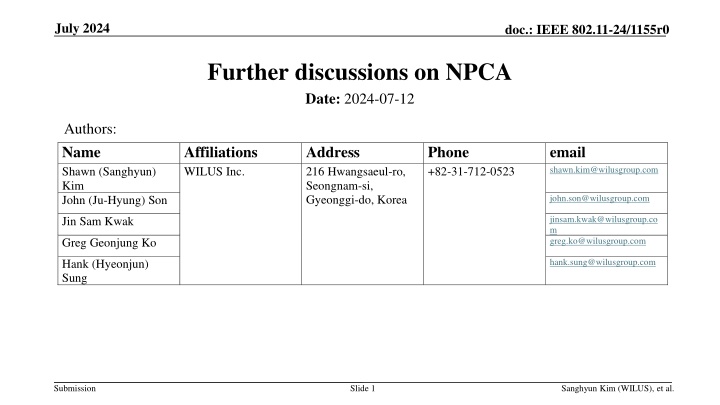

![❤[PDF]⚡ Civil War Talks: Further Reminiscences of George S. Bernard and His Fel](/thumb/20551/pdf-civil-war-talks-further-reminiscences-of-george-s-bernard-and-his-fel.jpg)

